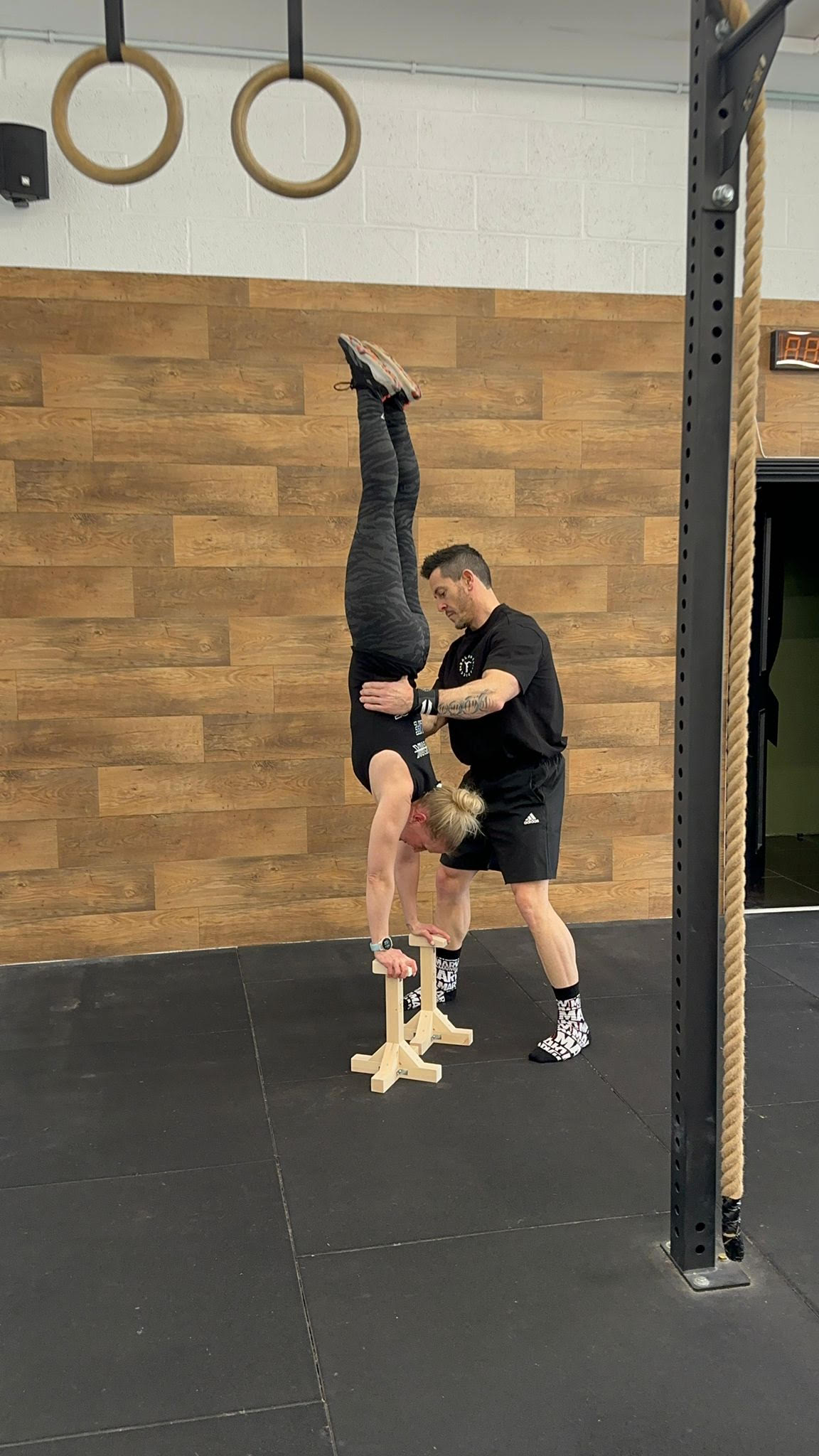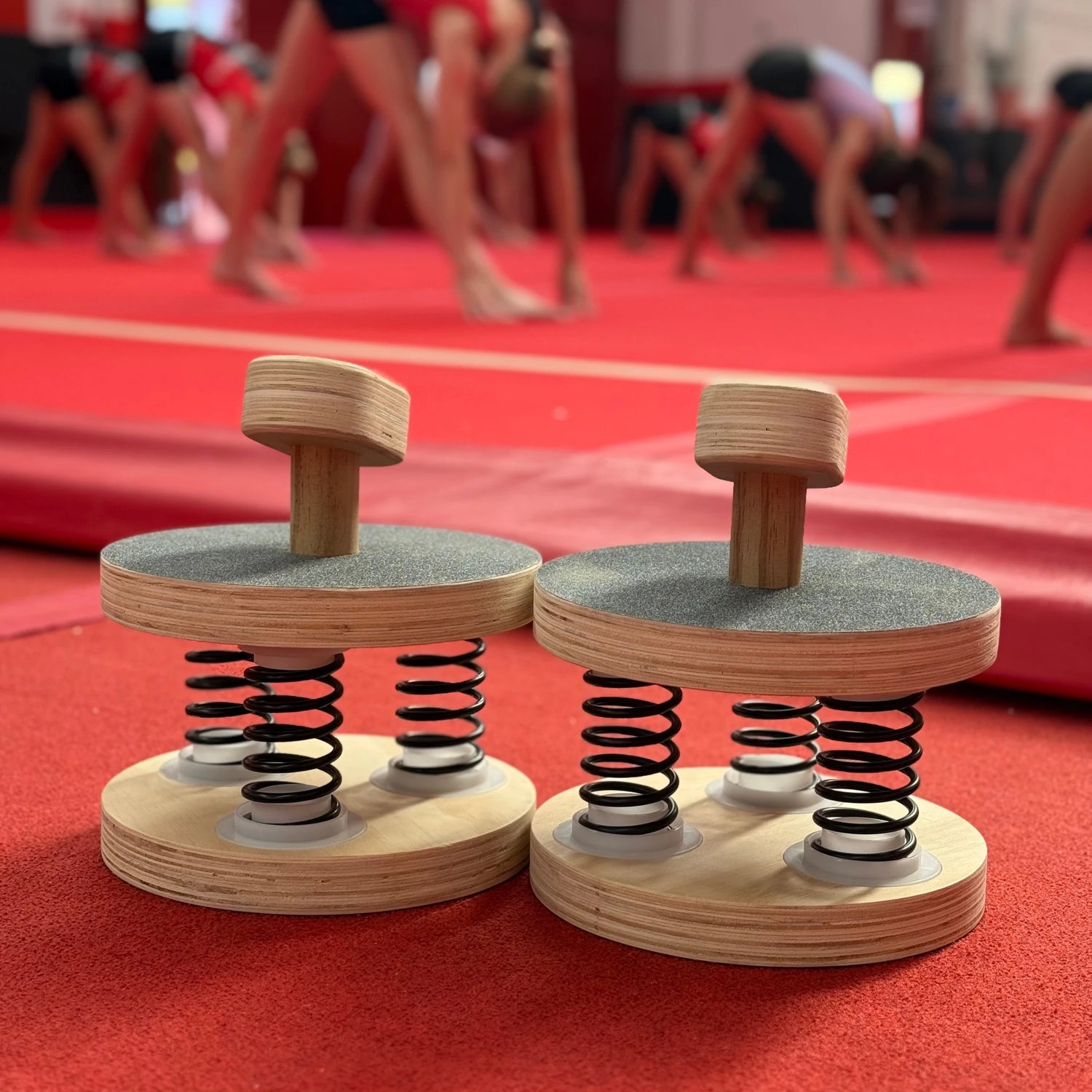
Learn 'How To': Handstand Calisthenics For Beginners
|
|
Time to read 4 min

Check out our exciting new balance product launches. Developed and tested by...
|
|
Time to read 4 min
Handstands are an impressive and fundamental calisthenics skill that requires strength, balance, and body awareness.
Whether you're inspired by TikTok tutorials or professional athletes, learning how to do a proper handstand is achievable with the right approach.
This guide to handstand calisthenics will walk you through the most important things to consider, from basic progressions to advanced techniques, ensuring that your handstand journey is successful.
The perfect handstand involves balancing your body weight on your hands, maintaining a straight line from your wrists to your toes.
Achieving this requires strength, flexibility, and proper form. The most important thing to remember is that handstands are as much about technique and body awareness as they are about strength.
To hold a handstand, you need to build shoulder strength and shoulder mobility. These are critical for supporting your body weight and maintaining balance.
Additionally, core strength, particularly in the lower back and abdominal muscles, is essential for stabilizing your body.
Hollow Body Hold : This exercise strengthens your core and helps you understand the proper handstand position. Lie on your back, lift your legs and shoulders off the ground, and hold a banana-like shape.
Shoulder Mobility Drills: Use a resistance band to perform shoulder dislocates, improving flexibility and range of motion.
Starting with the most basic progressions is crucial for building a solid foundation.
Wall walks are an excellent way to get comfortable with being upside down and develop the necessary strength for handstand calisthenics.
Step 1: Start in a push-up position with your feet against a wall.
Step 2: Walk your feet up the wall while simultaneously walking your hands closer to the wall.
Step 3: Aim to get your body as close to a vertical position as possible, ending in a chest-to-wall handstand .
This handstand calisthenics progression helps you practice the handstand position with the support of the wall.
Step 1: Start in a plank position facing away from the wall.
Step 2: Walk your feet up the wall until your chest is close to the wall.
Step 3: Focus on engaging your core and keeping a straight line from your hands to your toes.
Once comfortable with wall-supported handstands, you can begin attempting freestanding handstands.
Step 1: Start with small hops into the handstand position.
Step 2: Use a spotter or practice on a soft surface to reduce the risk of injury.
It's very important when training for handstand calisthenics that Hands should be shoulder-width apart. Your body should form a straight line, with your shoulders stacked over your wrists, hips over your shoulders, and feet pointed towards the ceiling.
Creating a structured handstand training routine is essential for consistent progress in handstand calisthenics.
Fear is a natural part of learning handstands. To overcome this:
Practice falling safely by learning how to tuck and roll.
Use a spotter or wall for support during your initial attempts.
If you find holding a handstand challenging, incorporate specific exercises to build strength:
Push-Ups : Increase upper body strength.
Planks and Side Planks : Strengthen your core and shoulder stabilizers.
Focusing on proper form and alignment will make handstand calisthenics easier and reduce the risk of injury. Use mirrors or record yourself to correct your form during practice.
Once you've mastered the basics of handstand calisthenics, you can explore advanced handstand calisthenics techniques and variations.
An advanced move that builds immense upper body strength. Start with partial range push-ups and gradually increase the depth.
This involves moving your hands to walk while in a handstand position. It requires excellent balance and coordination.
A highly advanced skill requiring significant strength and balance. Start by shifting weight from one hand to the other and gradually lifting one hand off the ground.
Balance Addicts athlete below, Tom, is a one-arm handstand master, but he'll be the first to tell you that consistency plays a huge part in achieving this skill.
Learning handstand calisthenics is a rewarding journey that combines strength, flexibility, and balance. By following the progressions outlined in this guide, you can build the foundational building blocks needed for a successful handstand practice.
Remember to focus on proper form, be patient with your progress, and stay consistent with your training sessions. Whether you're inspired by TikTok tutorials or professional athletes, mastering the handstand is within your reach with dedication and hard work.
Good luck on your handstand calisthenics journey, and enjoy the new perspective and confidence that comes with achieving this impressive calisthenics skill.



